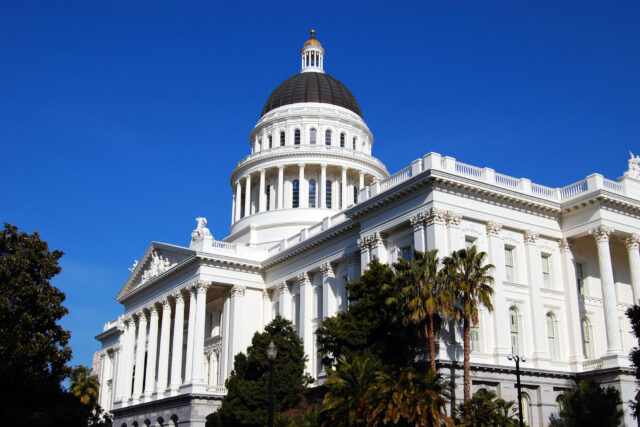Mark Baldassare, statewide survey director and Miller Chair in Public Policy at PPIC, was invited to speak to the Select Committee on Happiness and Public Policy Outcomes on March 12, 2024. This post is excerpted from his prepared remarks.
I am pleased to meet with the Select Committee on Happiness and Public Policy Outcomes. I have been analyzing local, state, and national polling on happiness and quality of life throughout my academic and professional career. When I launched the PPIC Statewide Survey in 1998, we included a frequently cited question on happiness from the nationwide General Social Survey. We recently repeated this question and quality of life items for an update of my book on California’s changing social and political landscape. I will summarize our findings to help set the context for the important work of the committee members.
We asked adult Californians in a September 2023 PPIC Survey, “Taken all together, how would you say things are these days?” We found
- 58% are “pretty happy”
- 16% are “very happy”
- 26% are “not too happy”
Majorities across age, gender, partisan, and racial/ethnic groups and state regions report being “pretty happy.” But fewer than one in five in these subgroups say they are “very happy.”
How do these California results compare with national findings? The most recent General Social Survey in 2022 reports that among Americans
- 55% are “pretty happy”
- 25% are “very happy”
- 20% are “not too happy”
A decline in happiness in the US coincided with the pandemic. We await the 2024 General Social Survey to learn if that decline is temporary or has deeper causes.
In California, we also see a decline in happiness. This is despite a fairly stable core of “pretty happy” adults. In fact, most adults said they were “pretty happy” in May 1998 (59%), February 2011 (47%), and September 2023 (58%).
But fewer Californians say they are “very happy” (28% May 1998; 32% February 2011; 16% September 2023). And a growing number say they are “not too happy” (13% May 1998; 20% February 2011; 26% September 2023).
It is important to note that certain demographic groups in California are less happy than others. Today, three in ten or more adults are “not too happy” among
- 18-to-34-year-olds (30%)
- Renters (32%)
- Those with a high school education or less (33%)
- Those with annual household incomes of $40,000 or less (39%)
Since the 1998 survey, the share who are “not too happy” increased by large margins for 18-to-34 year-olds (10% to 30%) and those with incomes under $40,000 (18% to 39%).
Why these downward trends? Our survey offers a glimpse at some key factors. We find that trends in happiness align with specific quality-of-life ratings on jobs, leisure activities, housing, and personal finance. As with overall happiness, we find that most Californians today are satisfied in these areas of life:
- Job: 33% very satisfied, 54% somewhat satisfied (September 2023),
- Leisure activities: 31% very, 53% somewhat (September 2023),
- House or apartment: 44% very, 41% somewhat (September 2023)
- Household financial situation: 16% very, 56% somewhat (November 2023)
However, decreasing shares are “very satisfied” with their job (52% to 31%), leisure (47% to 31%), and housing (53% to 44%). Satisfaction with household finances has not changed much.
Once again, younger adults and lower-income residents have lost ground. Among 18-to-34-year-olds we see declines since 1998 in those who are “very satisfied” with their job (37% to 18%), leisure (49% to 29%), and housing (43% to 32%). Similarly, those with incomes under $40,000 have seen decreases in the share who are “very satisfied” with their job (43% to 30%), leisure (42% to 25%), and housing (43% to 32%).
Of course, many other factors may contribute to happiness that we did not account for in this analysis. Residents’ satisfaction with their marriage, family, friends, neighbors, and local civic life may have an impact on their personal happiness. Their ratings of local parks, schools, police, streets and roads, and local air and water quality may also matter. And last but not least, residents’ perceptions of their physical and mental health, and specific indicators of economic well-being, may have profound consequences for their happiness.
At this point, we are not providing solutions on happiness and public policy outcomes. But we do recommend paying special attention to younger adults and lower-income residents given their higher levels of unhappiness. And we suggest a focus on policies related to jobs, leisure activities, and housing given the downward trends in satisfaction in these areas.
In closing, we still don’t know if declining happiness in the US and California is related to the pandemic or has its roots in larger political, social, and economic trends. For this reason, we plan to ask about happiness after the November 2024 election and compare and contrast our California findings with the national General Social Survey results.
Thank you for including this timely and relevant issue in public discourse.





